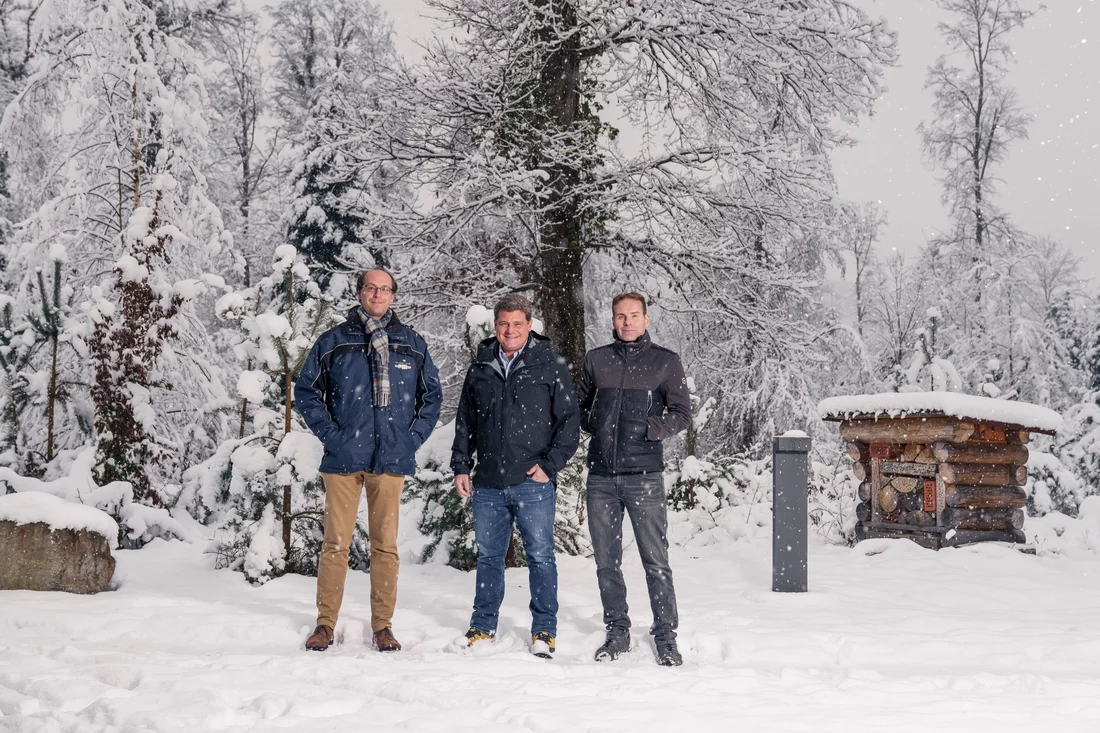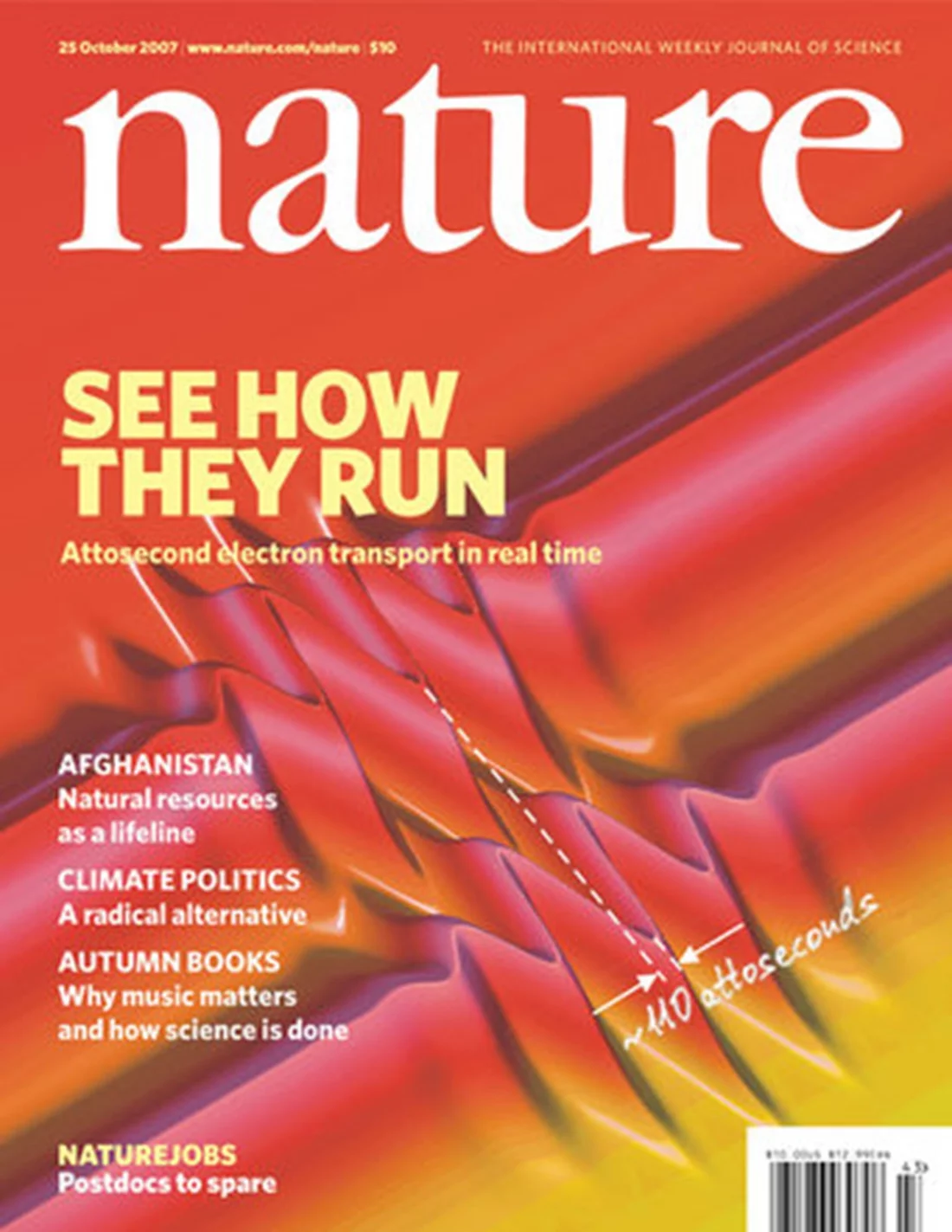The 2023 Nobel Prize in Physics was awarded for the development of attosecond science – a field that sheds light on the movement of electrons on their natural timescale. Several researchers at the Swiss X-ray free electron laser SwissFEL are recognised in the scientific background to this prize. This is no coincidence. With recent technical developments enabling attosecond and fully coherent X-ray pulses, SwissFEL promises to rapidly advance this emerging research area.
“We can now open the door to the world of electrons. Attosecond physics gives us the opportunity to understand mechanisms that are governed by electrons. The next step will be utilising them.” So said Eva Olsson, Chair of the Nobel Committee for Physics at the Royal Swedish Academy of Sciences, at the announcement of the 2023 Nobel Prize in Physics.
The prize was awarded to Pierre Agostini, Ferenc Krausz and Anne L’Huillier “for experimental methods that generate attosecond pulses of light for the study of electron dynamics in matter”. These breakthrough experimental methods are based on table-top laser systems – that is, laser systems that roughly fit onto an optical table and generate light mainly in the extreme ultraviolet energy range. Yet, in order to truly utilise our new insight into the world of electrons, further technological advances will be important that probe the movements of electrons in a wide variety of functional materials.
The scientific background produced by the Royal Swedish Academy of Sciences recognises the contributions from several researchers at PSI. There is a unifying theme to these researchers: they all now work at SwissFEL on upgrades that are enabling attosecond X-ray pulses, combining the possibilities of this astounding time resolution with the higher photon energies and higher photon fluxes offered by free electron laser light.
The first scientific applications of attosecond pulses to study electron motion in condensed matter
The contributions of these PSI researchers all lay in making the first steps of extending attosecond techniques, first developed in the gas phase, to new phases of matter - liquids and solids.
Adrian Cavalieri demonstrated the first scientific application of attosecond pulses of light in a solid as a postdoc with Ferenc Krausz at the Max-Planck Institute for Quantum Optics in Garching. Today, he is head of the laboratory for Non-Linear Optics at PSI, and Professor for Non-Linear Optics at University of Bern. The background document to the Nobel prize discusses Cavalieri’s first author Nature publication, in which he and Krausz use attosecond extreme ultraviolet pulses to study the motion of electrons during photoemission from a tungsten surface.
Using attosecond pulses to study the atoms in solids and liquids was not a simple progression. Here, the electron interactions are much more complex than in a gas. “This was a move towards using attosecond technology as a tool for scientific discovery,” says Cavalieri. “At first, studying the electron dynamics in such a complex system seemed an impossible feat.” Ultimately, this work set the stage for the measurement of attosecond delays in photoemission from atomic systems.
The research was further extended by Stefan Neppl, now a scientist in the Laboratory for Non-Linear Optics at PSI, who worked in the Krausz laboratory during his PhD. There, he clocked electron propagation inside crystals on the atomic scale with attosecond precision.
This vision to use attosecond technology for new scientific discovery, drove experiments to study electron dynamics in liquid water, explains Martin Huppert – today a laser engineer in Cavalieri’s lab. The scientific background to the prize recognises a publication in Science co-authored by Huppert as a PhD student at ETH Zurich in the group of Hans Jakob Wörner. “One of our motivations to extend attosecond spectroscopy to liquids was in order to understand how chemical reactions work,” says Huppert.
The sample delivery used in this work was based on a liquid jet setup initially developed for X-ray photoelectron spectroscopy experiments on the gas-liquid interface at the Swiss Light Source SLS. Today this still forms a key component of the In Situ Spectroscopy Beamline, where it continues to enable ground-breaking research in ultrafast science.
The attosecond tool of the future
In its original design, the SwissFEL produces femtosecond pulses of X-ray light in both the hard and soft X-ray regime. Attosecond soft X-rays pulses that are fully coherent are now becoming a possibility thanks to a European Research Council (ERC) funded project. With this, an external laser system ‘seeds’ the emission of X-ray photons (see 2022 Scientific Highlight), imprinting well defined properties on the beam. By implementing a technique known as echo-enabled harmonic generation (EEHG), this project promises to transform SwissFEL into a versatile tool able to create complex X-ray waveforms in attosecond time intervals.
This would be a game-changer for science, leading to remarkable possibilities ranging from damage-free X-ray experiments - with obvious implications for biology - to new measures of quantum tunnelling and entanglement.
“This would be a game-changer for science, leading to remarkable possibilities ranging from damage-free X-ray experiments - with obvious implications for biology - to new measures of quantum tunnelling and entanglement,” says Gabriel Aeppli, head of the Photon Science Division at PSI and coordinating principal investigator of the project.
Access to attosecond pulses at higher photon energies - in the X-ray, rather than extreme ultraviolet range - will allow the dynamics of electrons buried deeper within atoms and molecules to be studied. In particular, the soft X-ray range includes the sought after ‘water window’. At these energies, water is transparent, but carbon is not, enabling the study of biological molecules in solution, for example.
Huppert is now part of the team responsible for the seeding lasers at SwissFEL. He comments: “Our experiments in water relied on coherent pulses of light. This is currently not possible at SwissFEL, but after the upgrade it would be. This would be very exciting, because SwissFEL delivers a photon flux that most people in the attosecond research area can only dream of.”
What’s more, given the nature of a free electron laser, these photon energies would be adjustable. Speaking about his seminal 2007 Nature paper, Cavalieri says: “We studied tungsten in part because it was a convenient sample in that it matched the photon energy and bandwidth of the attosecond table-top XUV laser. At SwissFEL, we can freely adjust the energy and bandwidth, so we wouldn’t have to restrict measurements to convenient samples – it would open attosecond spectroscopy to targeted studies on technologically relevant systems.”
The Diavolezza experimental station, which is currently in the planning phase, will take advantage of the seeded pulses available on the Athos line. Key to this will be diagnostics that enable such short X-ray pulses to be characterised – one of the major challenges in attosecond science. Stefan Neppl, who is responsible for Diavolezza, says: “Ultimately, we hope that this will enable us to transfer the entire scope of table-top attosecond metrology to the more flexible free electron laser sources.”
These developments at a user facility such as SwissFEL would bring applications of attosecond research to a wider scientific community, allowing the science it illuminates to be truly explored: the “next step” that Olsson speaks of.
Text: Paul Scherrer Institute/Miriam Arrell
© PSI provides image and/or video material free of charge for media coverage of the content of the above text. Use of this material for other purposes is not permitted. This also includes the transfer of the image and video material into databases as well as sale by third parties.
Contact
Prof. Dr. Adrian Cavalieri
Head of Laboratory for Non-linear Optics
Paul Scherrer Institute PSI
+41 56 310 30 79
adrian.cavalieri@psi.ch
Original Publications
Attosecond spectroscopy in condensed matter
A.L. Cavalieri, N. Müller, Th. Uphues, V.S. Yakovlev, A. Baltuška, B. Horvath, B. Schmidt, L. Blümel, R. Holzwarth, S. Hendel, M. Drescher, U. Kleineberg, P.M. Echenique, R. Kienberger and F. Krausz
Nature 449, 1029 (2007)
Delay in photoemission
M. Schultze, M. Fiess, N. Karpowics, J. Gagnon, M. Korbman, M. Hofstetter, S. Neppl, A.L. Cavalieri, Y. Komninos, Th. Mercouris, C.A Nicolaides, R. Pazourek, S. Nagele, J. Feist, J. Burgdörfer, A.M. Azzeer, R. Ernstorfer, R. 13 (13) Kienberger, U. Kleineberg, E. Goulielmakis, F. Krausz and V.S. Yakovlev
Science 328, 1658 (2010).
Attosecond spectroscopy of liquid water
I. Jordan, M. Huppert, D. Rattenbacher, M. Peper, D. Jelovina, C. Perry, A. von Conta, A. Schild and H.J. Wörner
Science 369, 974 (2020).


